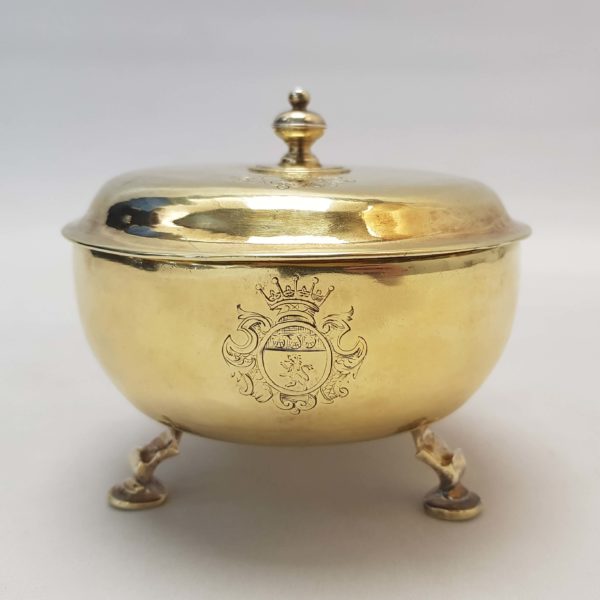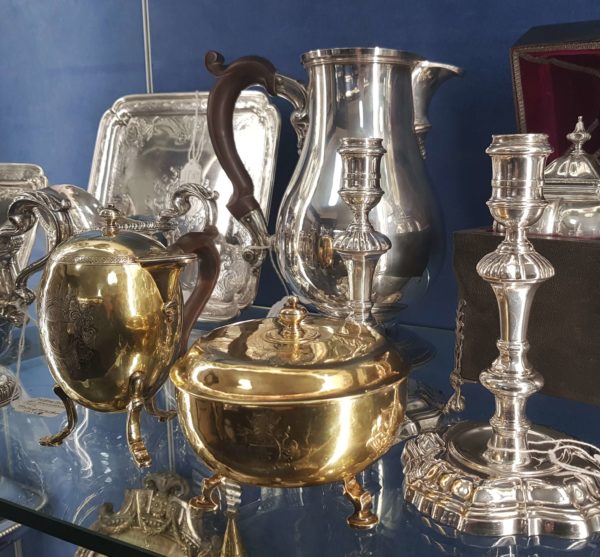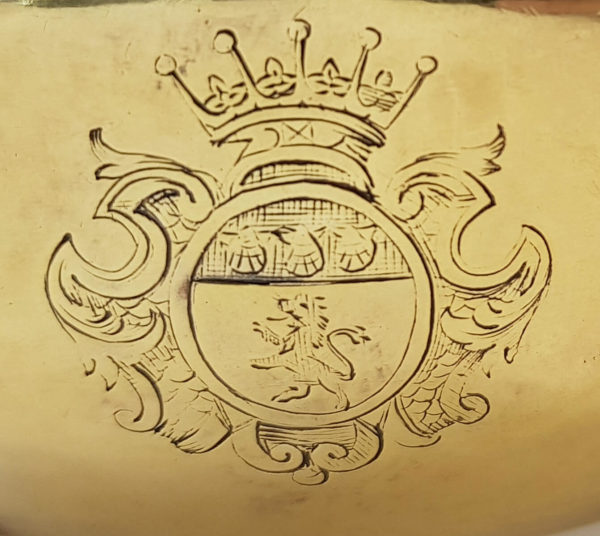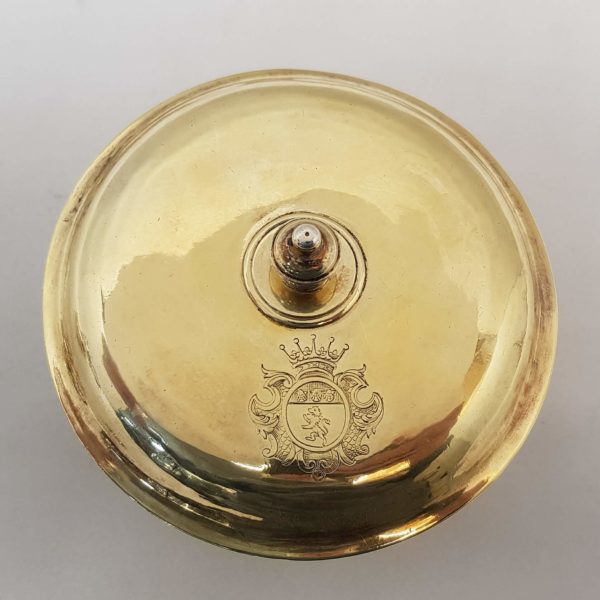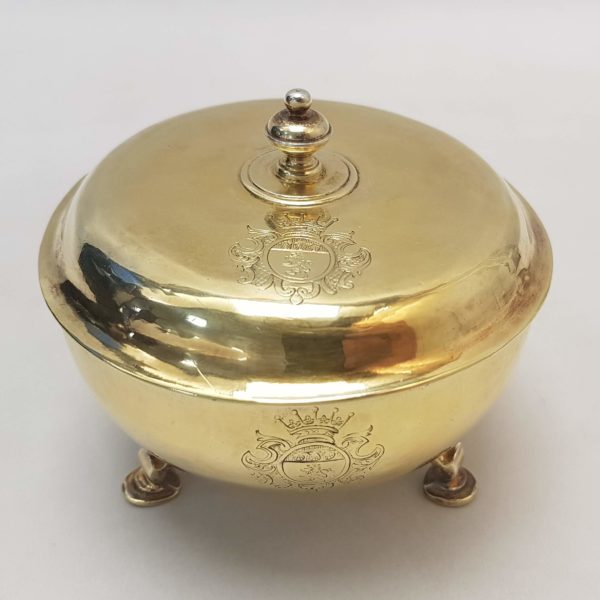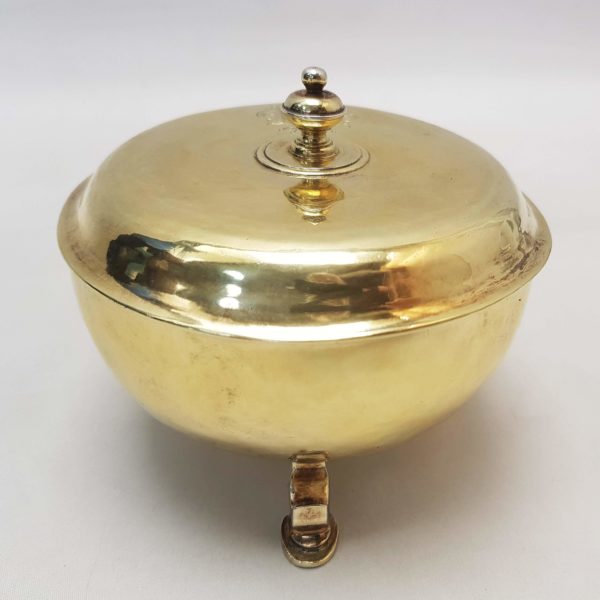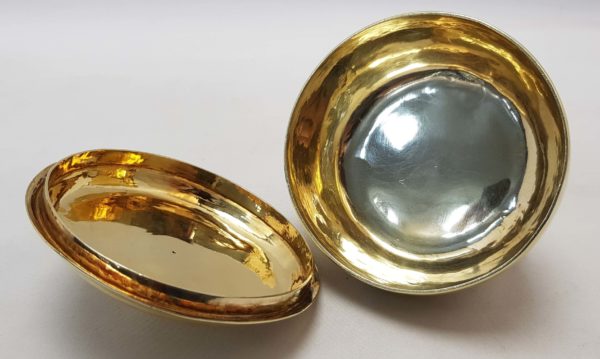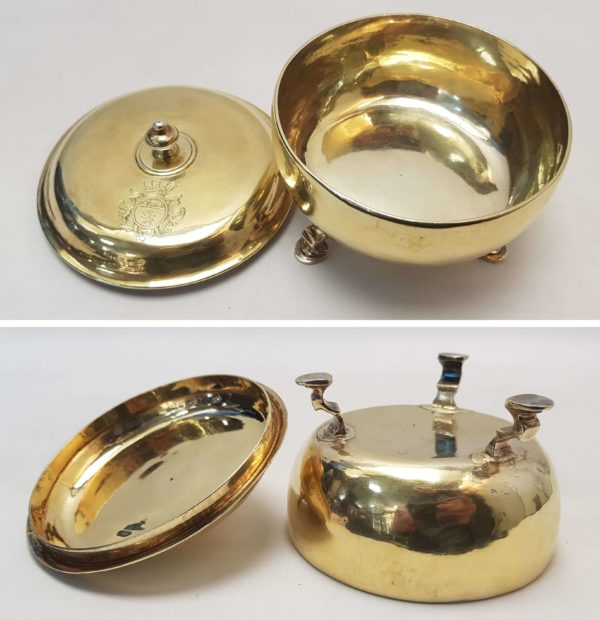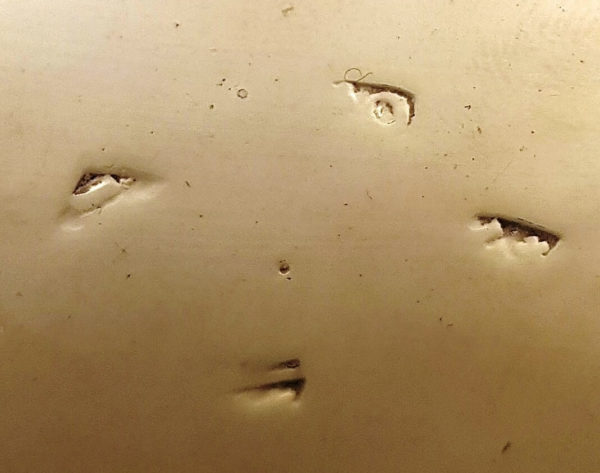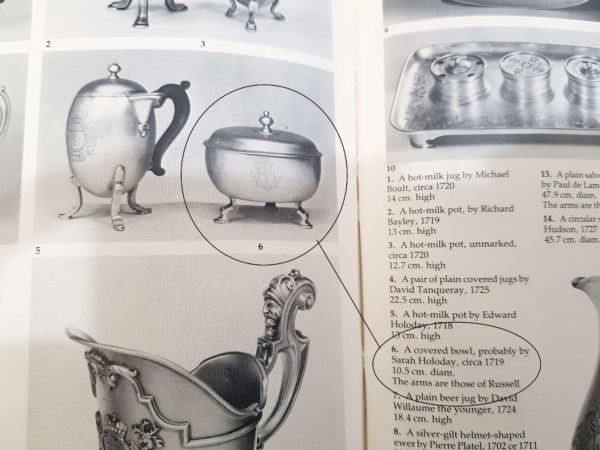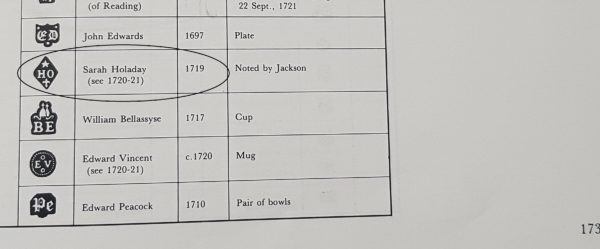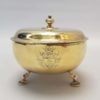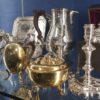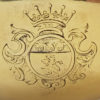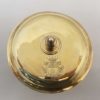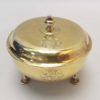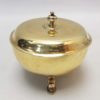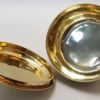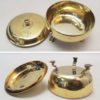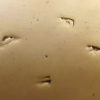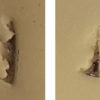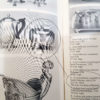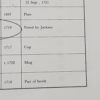George I Antique Silver Covered Sugar Bowl
SOLD
Stock: 10216
Date: Circa 1719
Maker: Sarah Holaday
Country: England
A rare antique silver gilt sugar bowl of circular form raised on three pad feet. To the front and top...
Description
Description
A rare antique silver gilt sugar bowl of circular form raised on three pad feet. To the front and top cover there is a finely engraved coat of arms with a coronet above for the Russell family. In the early 18th century sugar bowls or sugar boxes nearly always had covers which, when reversed, could be used as a saucer or spoon tray.
Weight 263 grams, 8.4 troy oz.
Height 9.5cm. Diameter 11cm.
Circa 1719.
Maker probably Sarah Holaday.
Britannia Standard silver purity.
18th century.
See also 10215 George I Antique Silver Hot Milk Jug
Marks. Stamped underneath with a full set of English silver hallmarks which are badly struck and very difficult to make out. The “H with a star above” is likely to be Sarah Holaday’s diamond shaped widow’s mark for Britannia Standard silver. We have no reason to doubt Michael Clayton’s “Christies” attribution of the date and maker. Scratchweight 9=8.
Provenance: The Schroder Collection of Works of Art. Illustrated in Michael Clayton’s “Christie’s Pictorial History of English & American Silver” page 120 illustration 6 – sold on 13.12.67.
Literature. Early sugar bowls, like the small size teapot, were of small capacity due to the rarity of tea. Small circular bowls from the late 17th century can occasionally be found, these were probably tea bowls originally but by 1710 the sugar bowl started to appear. These often had a cover which could be inverted for use as a saucer or spoon tray. Usually these early sugar bowls are round however octagonal examples are very rare and extremely desirable. Around 1730 larger bowls were introduced, possibly for slops. By the 1760s the swing handled sugar baskets and sweetmeat baskets were available.
Britannia Standard silver is 95.8% pure. In 1696, so extensive had become the melting and clipping of coinage that the silversmiths were forbidden to use the sterling standard for their wares, but had to use a new higher standard, 95.8 per cent pure. New hallmarks were ordered, “the figure of a woman commonly called Britannia” and the lion’s head erased (torn off at the neck) replacing the lion passant and the leopard’s head crowned. This continued until the old standard of 92.5 per cent was restored in 1720.
Condition
The sugar bowl and cover are in very good condition. The engravings are sharp. The lid fits tightly. Very little loss to the gilding. Moderate wear commensurate with age. There is a mark inside where the foot has pushed through slightly and a small split to the body.
Maker Information
Maker: Sarah Holaday
Sarah Holaday, London silversmith, presumably Edward Holaday’s widow. Entered her diamond shaped widow's mark, in 2 sizes in 1719. 2nd (Sterling mark) 1725.
Our Guarantee
Customer satisfaction is our primary concern
All silverware on our website is checked thoroughly prior to offering it for sale and every product listing contains a condition report and details of the silver hallmarks.
All items offered on our website include:
- Free Shipping Worldwide
- Tracked and Insured
- 14 day no quibble money back guarantee
- We are accredited members of LAPADA and conform to their strict professional standards
- We dispatch 1-3 days after receiving cleared payments
More detailed information about deliveries, returns and how to pay is available in the Help section at the bottom of this page.
